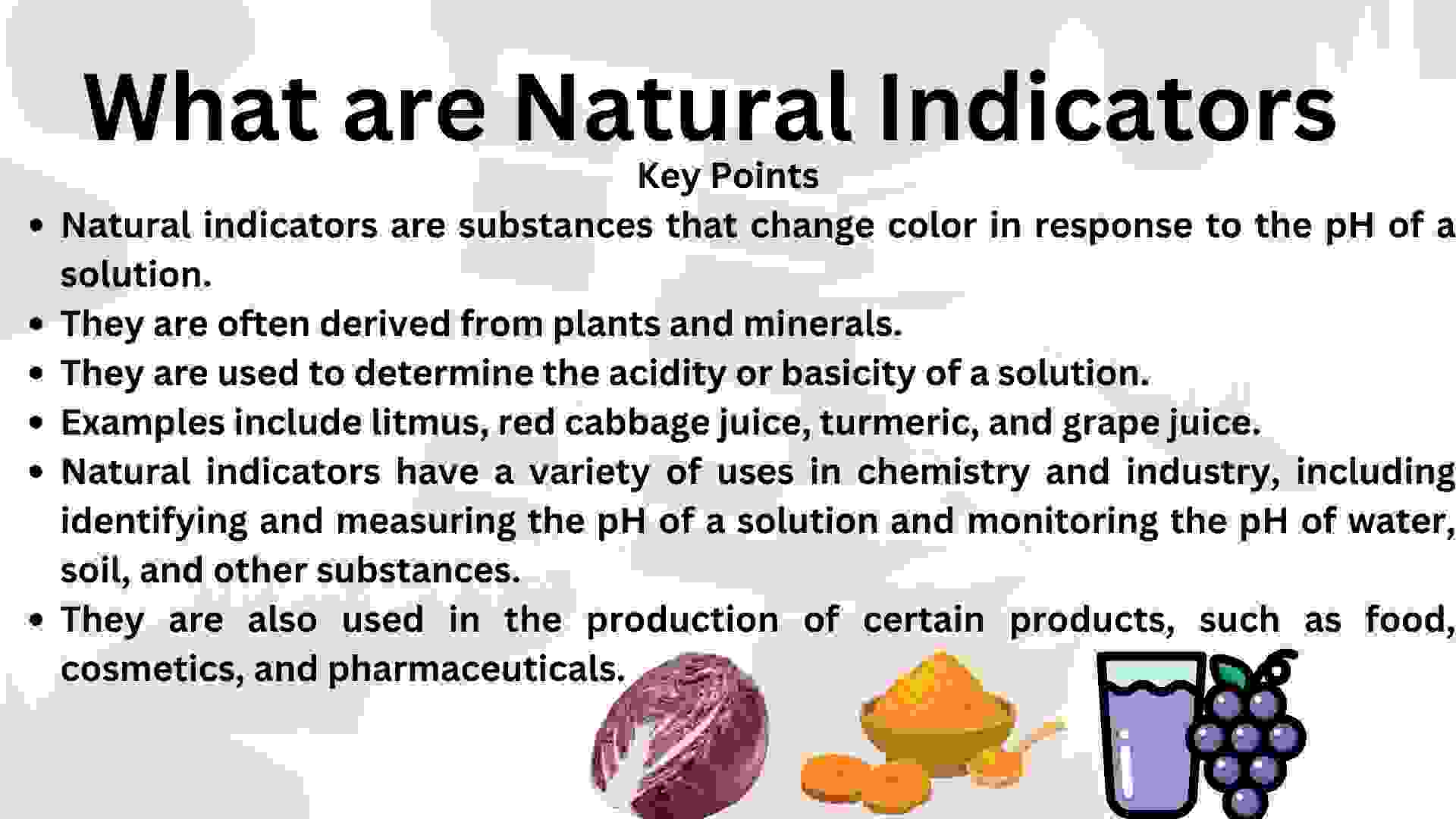Written by Adeel Abbas
What are natural indicators?
Table of Contents
Natural indicators are substances found in nature that can be used to determine the pH (acidity or basicity) of a solution.
Definition of natural indicators
As the name tells that these indicators can be derived from plants, minerals, and other natural sources, and they change color in response to the pH of the solution they are added to. Natural indicators are often used in chemistry labs and in various industrial processes, and they can be a useful tool for identifying and measuring the acidity or basicity of a solution.
You may easily get confused at comparing natural and synthetic indicators. Well there is a lot of difference between natural indicator and synthetic indicator.
Key Points
- Natural indicators are substances that change color in response to the pH of a solution.
- They are often derived from plants and minerals.
- They are used to determine the acidity or basicity of a solution.
- Examples include litmus, red cabbage juice, turmeric, and grape juice.
- Natural indicators have a variety of uses in chemistry and industry, including identifying and measuring the pH of a solution and monitoring the pH of water, soil, and other substances.
- They are also used in the production of certain products, such as food, cosmetics, and pharmaceuticals.
How do Natural indicators work?
Natural indicators work just like synthetic indicators by reacting with the hydrogen ions (H+) present in an acidic solution, or the hydroxide ions (OH-) present in a basic solution. When an indicator is added to a solution, it will change color based on the concentration of hydrogen or hydroxide ions present.
For example, litmus is a common natural indicator that is derived from a type of lichen. Litmus turns red in the presence of an acidic solution and blue in the presence of a basic solution. Other natural indicators include red cabbage juice, turmeric, and grape juice, which all change color in response to pH.
Examples of natural indicators
The most relevant examples of natural indicators are given below:
Litmus as natural indicator
Litmus is a natural indicator that is derived from a type of lichen. It is commonly used to test the acidity or basicity of a solution. Litmus turns red in the presence of an acidic solution and blue in the presence of a basic solution.
Red cabbage juice as natural indicator
Red cabbage juice is another natural indicator that changes color in response to pH. When added to an acidic solution, red cabbage juice turns pink or red. When added to a basic solution, it turns green or blue.
Turmeric as natural indicator
Turmeric is a spice that is commonly used in cooking, and it can also be used as a natural indicator. When added to an acidic solution, turmeric turns yellow. When added to a basic solution, it turns purple.
Grape juice as natural indicator
Grape juice is a natural indicator that changes color in response to pH. When added to an acidic solution, grape juice turns pink or red. When added to a basic solution, it turns green or blue.
Uses of natural indicators
Natural indicators have a variety of uses in chemistry and industry. They are often used in labs to identify and measure the acidity or basicity of a solution. They can also be used to monitor the pH of water, soil, and other substances to ensure that they are within a safe range for plants, animals, and humans.
Natural indicators are also used in the production of certain products, such as food, cosmetics, and pharmaceuticals. For example, they may be used to ensure that the pH of a food product is safe for consumption, or to ensure that the pH of a cosmetic product is suitable for use on the skin.
Natural indicators are substances that change color in response to the pH of a solution. They are often derived from plants and minerals, and they are used to determine the acidity or basicity of a solution. Natural indicators have a variety of uses in chemistry and industry, and they can be a useful tool for identifying and measuring the pH of a substance.
